- Home
- Larry McMurtry
The Colonel and Little Missie Page 20
The Colonel and Little Missie Read online
Page 20
Still, the next spring, she shot at the Philadelphia Phillies training camp, hitting tossed pennies as readily as ever.
She shot, now and then, at various gatherings, though seldom with quite her old enthusiasm. Once or twice she did summon the old spirit; she even once danced a jig despite her brace.
Then, little by little, she finally began to let show business go. By then she took a certain amount of looking after. Frank, though docile enough, could not be bothered with domestic chores, though he did, now and then, cut a pile of firewood for Annie’s little stove. Fortunately the Butlers moved to Ohio, to Darke County in fact, where Annie had four nieces who saw that their famous aunt was well looked after.
When the Butlers made their will, Frank left a little something to his first wife, Elizabeth, and their daughter, Kattie. It makes one wonder where these two had been for forty years. Annie was many things, but she was not a sharer. The other ex-wife and the grown child were never mentioned.
The end of Annie Oakley’s story I gave at the beginning of this book. She had anemia, and it worsened; Frank Butler was rapidly fading too. The nieces saw that what could be done was done. Frank, in Michigan, was well taken care of.
Then one day the lady undertaker, Louise Stocker, did her duty. Soon Annie went home up North Star way.
Will Rogers, who loved her, sent this comment: “Whenever I think of Annie Oakley I stop and say to myself: it’s what you are, not what you are in, that makes you.”
The address on his letter was Beverly Hills, California.
20
WILLIAM F. CODY never lost his looks, though he did lose his hair. As early as the nineties Burke and Salsbury convinced him he would have to make do with hairpieces, and he did so for some twenty years. Occasionally he embarrassed himself by lifting his hairpiece when he lifted his hat. These occasions put him out of temper; he was not without vanity. Also he knew that a legend had to behave like a legend. His appearance, to a large extent, was still his meal ticket.
Despite the many vexations that come with aging, Cody remained a remarkably resilient man. He suffered many lows, but he also rose above many humiliations, the worst of which was the failure of the Two Bills show and the subsequent sale of its assets—mainly livestock—at a sheriff’s auction in 1913. After this sad event Cody said of Tammen: “He was the man who had my show sold at a sheriff’s sale, which broke my heart.” It also broke his relationship with Gordon Lillie, who owned half the show. Some friends, feeling sorry for Cody, bought his show horse Isham at the auction and gave him back to Cody.
Gordon Lillie was not slow in realizing that Tammen got Cody on the ropes financially and set a clever trap: what he wanted and what he got was de facto control of Cody, still in Tammen’s eye a very valuable asset. The movie stars were coming. Chaplin, Douglas Fairbanks, Mary Pickford, and others would soon achieve a fame that even Cody’s couldn’t equal. But for a time there was still plenty of money to be made off Buffalo Bill.
Tammen was right—Cody was still world-famous. It was at this time that the big offer came in from the variety show in England. Though Cody rejected the offer, the mere fact that it had been made convinced him that he could make yet another comeback. Tammen still had him working in the Sells-Floto Circus, but what working meant in this context was mainly just that Cody showed up and made a few trips around the arena, sometimes on Isham, sometimes just in a phaeton. He had stopped breaking glass balls on any regular basis, though sometimes he would break a few as a flourish. He seemed spent, he seemed blocked, and yet it was at about this point that he flung himself into moviemaking, even using some of Tammen’s money. Movies were clearly there to stay; Tammen, like many another tycoon in the decades to follow, wanted to get in on the show, meet the stars, bask in the glamour. Harry Tammen would soon learn the bitter lesson that many a tycoon has since learned: movies can lose a lot of money; just swallow it up, as a dry lake swallows water. How could a movie about Buffalo Bill and the Indians lose money? he probably asked himself. He soon found out exactly how, which is not to say that his gamble was a bad one going in.
What defeated the Indian War Pictures was Cody’s desire for authenticity—this was General Miles’s desire too, and in fact, the simpler parts of the Indian War skits probably did work. Custer’s defeat, the attack on the settler’s cabin, Cody’s scalping of Yellow Hair were effective. What sunk them was the attempt to do Wounded Knee, a huge, tragic event where simplification was not possible. Included in the thirty thousand feet of footage were some scenes of the Ghost Dance as well as the death of Sitting Bull; these, taken alone, might have been effective. But marching the six hundred soldiers around and around the empty camera was just silly.
Besides, the newsreel had been born by this time. In 1915 American audiences were transfixed by the sight of a much more deadly, unfictionalized slaughter—the slaughter that was happening day by day on the Western front in World War I.
When Indian War Pictures was finally withdrawn from the movie screens, the greatest showman of his time had only a year or two in which to wander in the shadows of old age. He continued to make occasional appearances, and now and then he would get excited about some new scheme—a mine that couldn’t possibly fail, a resort that would soon fill up with Eastern nobs—but these notions were feebly pursued because Cody had no money with which to pursue them. He found himself in the same position as another great hero of the West, the explorer John Charles Frémont, who had once himself had millions but was at the end dependent on what his resourceful wife, Jessie Benton Frémont, could earn with her journalism. On the whole Cody held up better than Frémont, who, in the last photographs, looks very, very distinguished but also very, very sad.
As Cody’s finances failed, so did his health. Fortunately, as the end approached, he had his sisters. He had always been extremely generous to his sisters, who were all, of course, convinced that Lulu had neglected him terribly—it had actually been the other way around.
But by this time Lulu too was glad to help—wasn’t he still her husband? All his family gathered around and tried to buoy him up.
As he was dying Cody apparently said, “Let my show go on!” and efforts were made to see that he got his last wish. The sharpshooter Johnny Baker, griefstricken at the death of the man who had raised him and given him his calling, managed to bring in the Miller Brothers (they had bought most of the livestock at the Two Bills auction) and a few other old performers, many of them veterans of Cody’s shows, and worked up one last tour. This was Cody’s true farewell tour, which the boss himself had to miss. Some Indians came. They realized that in losing Pahaska they had lost a friend.
But this short tour was mounted in 1917, while World War I, the Great War, still raged. Buffalo Bill’s name was on the marquee one last time but it was the wrong year in which to expect people to be interested in Wild West shows. The farewell tour folded in Nebraska, which was fitting, since the first show had been mounted in Omaha.
21
BUFFALO BILL’S death made big headlines. The Cambridge-born poet E. E. Cummings, then twenty-one years old, read the headlines and scribbled a note or two in his journal.
Some years later, pondering his notes and remembering the man who had inspired the headlines, E. E. Cummings, who had by this time decided to pitch his poetical tent in the lower case alphabet, wrote this poem:
Buffalo Bill’s
defunct
who used to
ride a watersmooth-silver
stallion
and break onetwothreefourfive pigeonsjustlikethat
Jesus
he was a handsome man
and what i want to know is
how do you like your blueeyed boy
Mister Death
The most recent and most comprehensive edition of E. E. Cummings’s Complete Poems is more than eleven hundred pages long. The Buffalo Bill poem is the most famous lyric in this long book, though, of course, we still don’t know what Mr. Death thought about his blue-ey
ed boy.
22
NONE of those who knew Cody well were surprised that he was impoverished at the end. Annie Oakley didn’t go to his funeral, but she gave several interviews about him, all of which mentioned his generosity. Once, she remembered, Frank Butler, herself, and Cody came out of a stage door in Manhattan to see a ragged group of bums huddled miserably on a freezing night. Cody at once asked the Butlers how much cash they could scrape up. The three of them managed to dig out $25—Cody insisted on giving $23 of it to the men, ordering them to use it to get a meal and a bunk out of the cold. He and the Butlers, left with $2, dined, as Annie put it, “on simple fare.” (She herself had developed such a taste for fare that was not simple that she once reportedly bloomed up to 138 pounds. But she soon got it off and was slim again at the end.)
Everyone who knew Cody mentioned that his weakness was that he could never deny assistance—usually financial—to anyone who asked him. This is not the worst failing a man could have. He may have ended up broke, but he also ended up famous and widely, almost universally, beloved. He was so famous that within a few hours of his death both the president of the United States (Woodrow Wilson) and the king of England (George V) had cabled in condolences and regrets.
The boy who grew up half wild in the Salt River Valley had undoubtedly come a long way. He lived long enough into the movie era to see what huge stars the movies could produce. He may have been bemused by the soaring fame of Chaplin, Mary Pickford, the Gish sisters, William S. Hart. Bemused, but probably not seriously envious. They were wonderful players, but in his time, he had been a big player too—indeed, probably the biggest player, the best-known star. William F. Cody was one of the people who have a fair claim to having invented the star system, for better or for worse.
The man who helped him do it, the faithful press agent John M. Burke, outlived his master and idol by only thirteen weeks.
23
IN the dining room of the Onion Creek Grill, a café in my hometown, Archer City, Texas, there is a Cody poster that I sometimes study if I happen to land in the right booth. It’s not really an old poster, but it’s old enough to have got smoked up a little—there are suggestions of grease along the lower edge. It’s one of thousands of Cody artifacts, but it happened to be hanging in the right place to start me thinking about the man.
Though it is not a very large poster, a great deal of potent imagery has been crammed into it.
In the center of the poster Cody reclines in an oval, his hair long and loose, his manner benign. Behind him stretch the great prairies of the West. Animals—a little indistinct—graze in the far distance. Cody has a rifle but he is not hunting. The drawing is Flaxman-like. Cody looks about himself with a noble gaze—he might be the Zeus of the West.
Surrounding the central oval is a frieze of the usual high spots from Cody’s career. There he is driving a stage, riding with the Overland Mail, trapping beaver. The frieze is complex and runs all the way around the poster. Of course there is the Taking of the First Scalp for Custer—but then there is also the Challenge Buffalo Hunt, the one some biographers even doubt took place. And finally there is General Sheridan, making Cody chief of scouts before all the troops on the parade ground of a fort. It seems unlikely that Sheridan would have ordered up such a show for the scout who had already been doing the work anyway; but there it is, lower left.
The poster, with Cody resting Zeuslike at the center, is emblematic; it attempts to encompass the whole destiny of the American frontier where Cody had lived and acted. Nothing very significant to the long effort of settlement has been left out. There are Indians, plains, buffalo, hunters, soldiers, settlers, even beaver. To my mind the beaver is a particularly important touch. Cody himself trapped beaver for only a few weeks, but beaver provided the first wealth to come out of the West, and they belong in the story. It was the beaver who brought the mountain men, the mountain men who brought the settlers; then the Indians fought the settlers and the soldiers came to fight the Indians. Buffalo Bill, in the frieze, is punching cattle, driving a stagecoach, riding on the Pony Express, scouting for General Sheridan and being honored for it, after which he gets to the right place at the right time and takes the first scalp for Custer.
When it came to cramming the history of the settling of the American West onto one poster, Buffalo Bill Cody knew exactly what to do.
24
SUPERSTARS cannot exactly create themselves, no matter how skilled—the public can be manipulated vis-à-vis superstars only up to a point. The public must, at some point, develop a genuine love for the performer—a love that grows and grows as long as the performer lasts. When great stars die, thousands mourn and mourn genuinely. Exactly how this chemistry works no one quite understands—but some deep identification is made or superstardom doesn’t happen.
Examples abound. Robert Duvall is a brilliant actor, one of the finest of his generation. He’s never short of work, but he’s not a superstar.
As an actor John Wayne was not really in Duvall’s class, but as a performer he was in a higher class: the class of superstars. Why John Wayne and not Robert Duvall? Who knows? John Ford, who, with Howard Hawks, made John Wayne a superstar, is supposed to have said, “The son of a bitch just looks like a man.” Wayne, of course, was a competent but seldom an inspired actor; his famous, slightly tilted walk was endlessly rehearsed. Was it the walk that made him a superstar? Or was it something closer to what made Cody a superstar: the sense that this guy just belongs in the West. From Stagecoach on Wayne was, in a way, the new Buffalo Bill.
Cody rehearsed his moves too, just as Annie Oakley rehearsed her shooting tricks and her mannerisms. Without Cody to showcase her Annie Oakley might have been a celebrated shot, but she would not likely have become the international star that she became.
And yet, the prominence of Cody’s venues doesn’t explain her superstardom, either. Perhaps what won the crowd was the little pout when she missed, or her jaunty little back kick when she was pleased—of such tiny but well-rehearsed bits of business are great superstars made. Think of Chaplin—think of Jackie Gleason.
Annie Oakley’s stardom was real, just as was Bill Cody’s. People liked to see Cody ride his horse fast and pop a few glass balls. He wanted to embody history—the history he had been a part of—and to an extent he did. In this matter he and his audiences were one in that, somehow, they wanted the West, the gloriously dangerous West, the mythic romantic West, the cowboy-and-Indian-filled West, and Cody came closer to giving it to them than anyone else because he had it in himself and audiences could see that. He invented rodeo, sponsored cowboys, supported and promoted Indians, many Indians. He drew forth those seventeen hundred dime novels. Thanks to his shows millions of people came to know, or to think they knew, at least a little of what westering, in the broadest sense, had been like.
Whatever his flaws, and there were many, Cody’s life work was no mean achievement.
Let Annie Oakley, his greatest star, speaking elegiacally, in terms appropriate to the times, speak the final words:
Goodbye, old friend. The sun setting over the mountain will pay its tribute to the resting place of the last of the great builders of the West, all of which you loved, and part of which you are.
Western Heroes, Heroines, and Villains
HOW LONG THEY LASTED
Meriwether Lewis
1809
Sacagawea
1812
Manuel Lisa
1820
Jedediah Smith
1831
William Clark
1838
Kit Carson
1868
George Catlin
1872
Captain Jack
1873
Alfred Jacob Miller
1874
George Armstrong Custer
1876
James Butler Hickok
1876
Crazy Horse
1877
Texas Jack Omohundro
1880<
br />
Billy the Kid
1881
Jim Bridger
1881
Doc Holliday
1887
Phil Sheridan
1888
Ranald S. Mackenzie
1889
Sitting Bull
1889
George Crook
1890
John Charles Frémont
1890
W. T. Sherman
1891
John Wesley Hardin
1895
Calamity Jane
1903
Chief Joseph
1904
Red Cloud
1909
Geronimo
1909
F. Remington
1909
Quanah Parker
1911
William F. Cody
1917
Theodore Roosevelt
1919
Annie Oakley
1926
Charles Russell
1926
Doc Carver
1927
Charles Goodnight
1929
Wyatt Earp
1929
Bill Pickett
1932
Libbie Custer
1933
Will Rogers
1935
Gordon Lillie
1942
Nicholas Black Elk

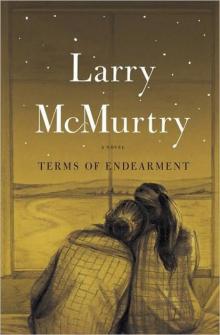 Terms of Endearment
Terms of Endearment Some Can Whistle
Some Can Whistle All My Friends Are Going to Be Strangers
All My Friends Are Going to Be Strangers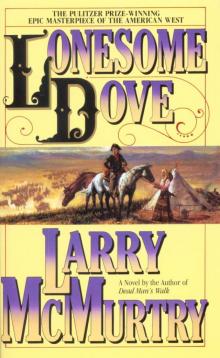 Lonesome Dove
Lonesome Dove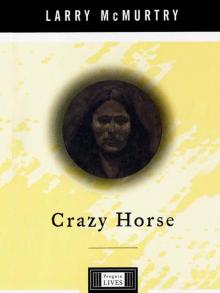 Crazy Horse: A Life
Crazy Horse: A Life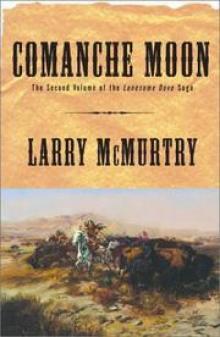 Comanche Moon
Comanche Moon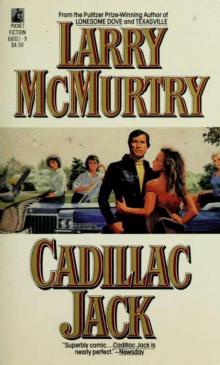 Cadillac Jack
Cadillac Jack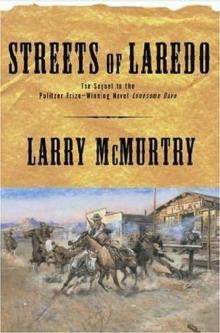 Streets of Laredo
Streets of Laredo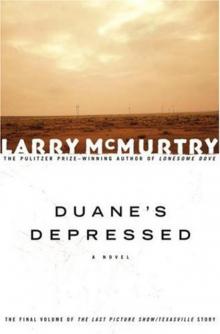 Duane's Depressed
Duane's Depressed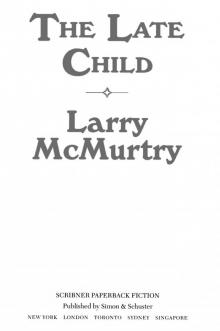 The Late Child
The Late Child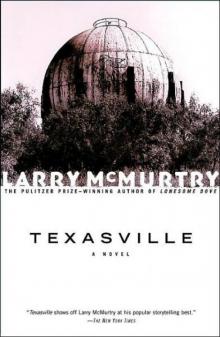 Texasville
Texasville Rhino Ranch
Rhino Ranch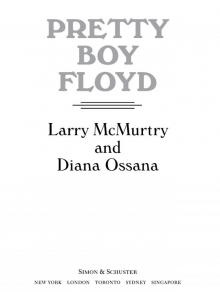 Pretty Boy Floyd
Pretty Boy Floyd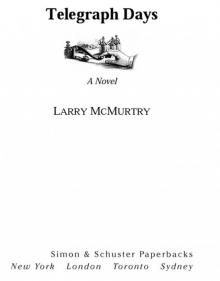 Telegraph Days
Telegraph Days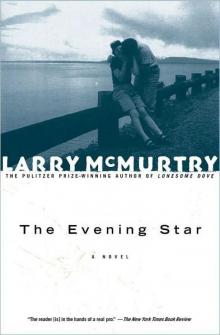 The Evening Star
The Evening Star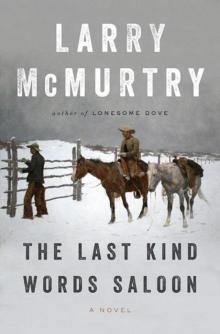 The Last Kind Words Saloon
The Last Kind Words Saloon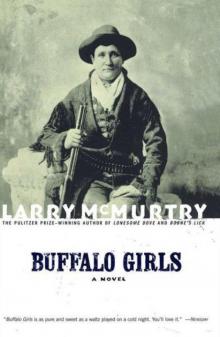 Buffalo Girls
Buffalo Girls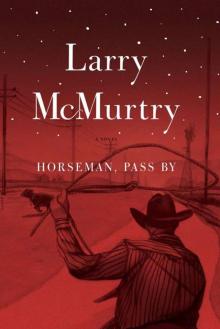 Horseman, Pass By
Horseman, Pass By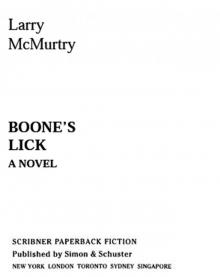 Boone's Lick
Boone's Lick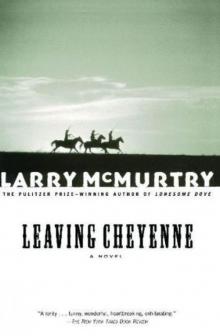 Leaving Cheyenne
Leaving Cheyenne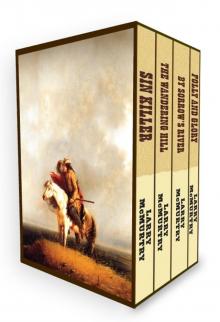 Sin Killer
Sin Killer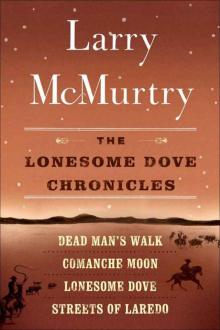 The Lonesome Dove Chronicles (1-4)
The Lonesome Dove Chronicles (1-4)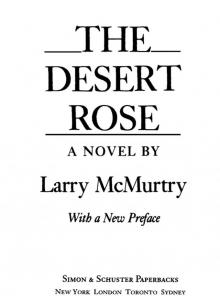 The Desert Rose
The Desert Rose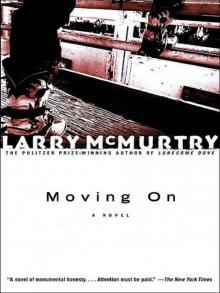 Moving On
Moving On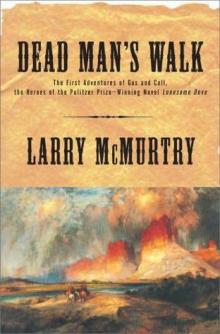 Dead Man's Walk
Dead Man's Walk The Last Picture Show
The Last Picture Show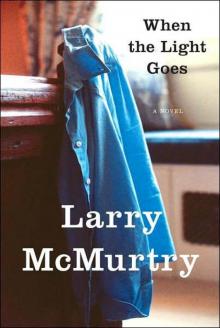 When the Light Goes
When the Light Goes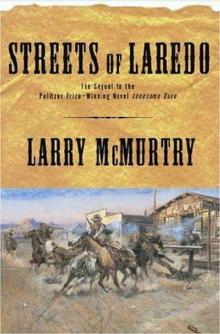 Streets Of Laredo ld-2
Streets Of Laredo ld-2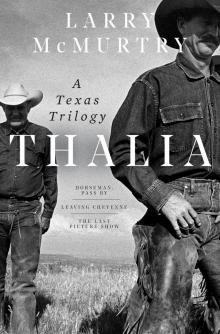 Thalia
Thalia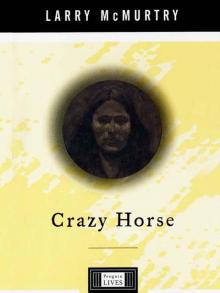 Crazy Horse
Crazy Horse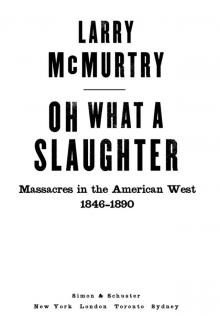 Oh What a Slaughter
Oh What a Slaughter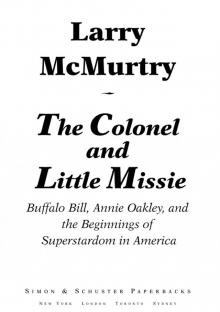 The Colonel and Little Missie
The Colonel and Little Missie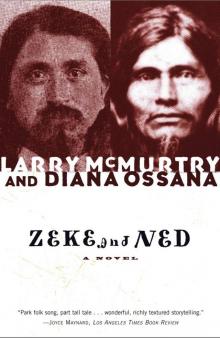 Zeke and Ned
Zeke and Ned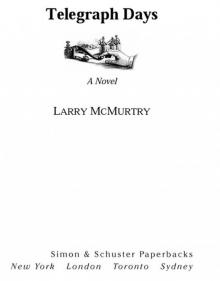 Telegraph Days: A Novel
Telegraph Days: A Novel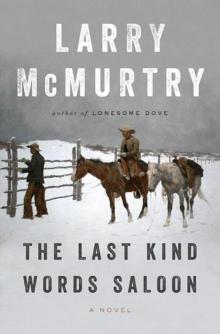 The Last Kind Words Saloon: A Novel
The Last Kind Words Saloon: A Novel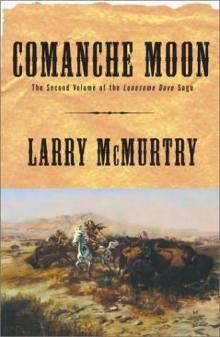 Comanche Moon ld-4
Comanche Moon ld-4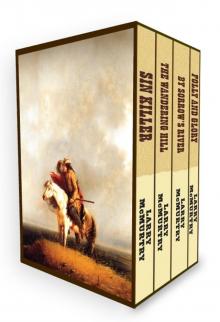 The Berrybender Narratives
The Berrybender Narratives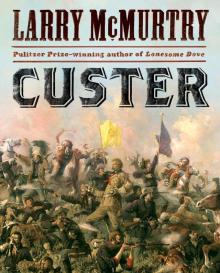 Custer
Custer